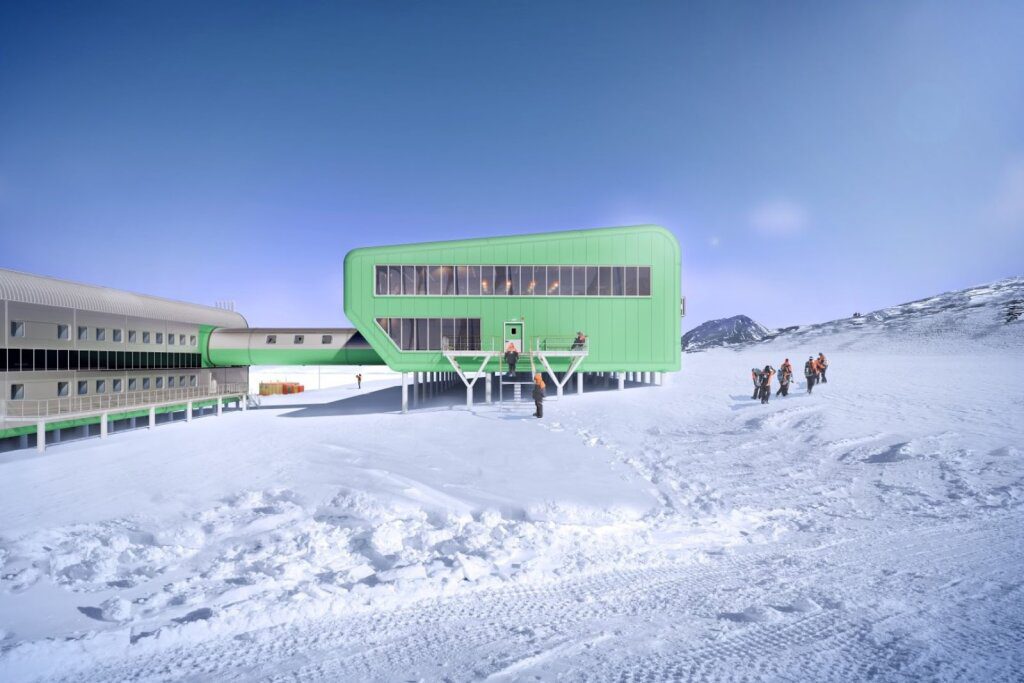According to the American Museum of Natural History, Antarctica has been referred to as the “windiest place on earth,” with wind speeds reaching as high as 200 miles per hour. This distinction makes the world’s southernmost continent an obvious choice for wind power.
Even though Antarctica has no permanent human habitation, it is home to scientific research stations. One of the oldest is Antarctica New Zealand’s Scott Base, located in the Ross Sea region of the continent. A trio of wind turbines provides renewable power to Scott Base and McMurdo Station, an American research facility located right next door.
Those turbines will soon be replaced by three new ones, according to an April 12 press release from Antarctica New Zealand. The three new pieces of equipment will sail to Ross Island in the summer of 2023–24 (winter in the northern hemisphere) to power the refurbished Scott Base development.
The turbines “are part of an extensive upgrade program for the Ross Island Wind Energy system,” Sarah Williamson, Antarctica New Zealand chief executive, said in a statement.
“One of the new turbines will generate almost as much power as the three current ones combined and, together with a battery storage system, will provide more than 90% of the electrical demand of the new Scott Base per year,” Williamson added.
The wind turbine system not only reduces the carbon footprint of New Zealand’s Antarctic operations, she said. It also lowers “environmental risks associated with transporting diesel fuel to Antarctica.”

Wind turbine maker EWT will supply and install the three new DW54X-1MW models, Electrek reported. Each has a rotor diameter of 177 feet and a hub height of 131 feet.
The wind turbines will be installed at Crater Hill, located about halfway between Scott and McMurdo stations. They will be connected to a microgrid that provides electricity to both stations.
It won’t be an easy project. As EWT noted, climate conditions at Ross Island are “very challenging,” with annual average temperatures of -19.5°C. In addition, wind conditions are “very strong,” and teams can only reach Ross Island in the summer, running from November to April in the southern hemisphere.
According to a 2021 blog on the Firetrace website, extremely frigid temperatures require owners/operators of wind turbines to weatherize them. This guidance includes “using materials and electronics rated for lower temperatures, installing heaters, and having de-icing tools easily accessible.”
Once all that is sorted out, the new Ross Island system should pay big dividends.

“By upgrading the energy system at the island, Antarctica New Zealand will be able to benefit more from these wind conditions and significantly increase the percentage of renewable energy in their total (and growing) energy demand,” an EWT press release said.
According to the Antarctica New Zealand website, the redevelopment of Scott Base will replace aging infrastructure with a “safe, fit-for-purpose, and sustainable research facility” that will support New Zealand’s presence in the Ross Sea for the next half-century.
Scott Base was built in 1957 to support the Trans-Antarctic Expedition and has been “continuously occupied” since then. The last significant infrastructure investments were in the 1980s and mid-1990s.
In the 2021 budget, Antarctica New Zealand received $344 million to rebuild Scott Base. The money will go toward renewing the wind farm and ensuring “the new base is powered by up to 97% of renewable energy.”
The base consists of three interconnected buildings accommodating up to 100 people. It will “include an accommodation, dining, and welfare building, a science and management building, and an engineering and storage building,” Antarctica New Zealand noted.





